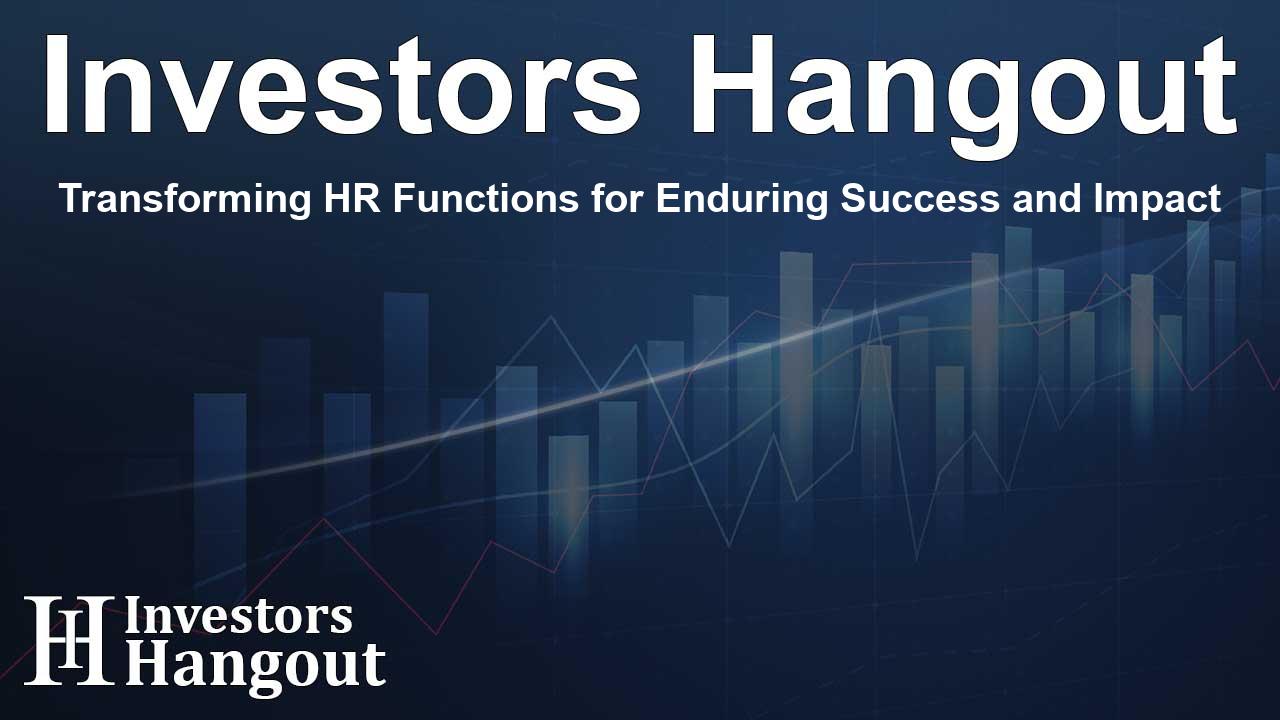Transforming HR Functions for Enduring Success and Impact

Streamlining HR Function Structures for Future Growth
Recent research from McLean & Company, a global leader in HR advisory, outlines a crucial four-step process to support HR leaders in redesigning the structures of HR functions. These recommendations aim to align HR frameworks with strategic goals, enhance adaptability to changing workplace needs, and improve efficiency and collaboration across organizations.
Addressing the Evolving Challenges in HR
As the workplace continues to evolve, HR teams face increasing challenges that compel them to reconsider traditional practices. According to findings from McLean & Company, organizations frequently struggle to align HR structures with strategic objectives amidst various pressures, including global talent shortages and technological advancements. This misalignment necessitates a reevaluation of conventional frameworks, encouraging HR leaders to devise more agile, future-focused strategies.
Breaking Down Misconceptions Around HR Redesign
The necessity of HR structure redesign is often overlooked or confused with other organizational strategies like headcount or workforce planning. To clarify, McLean & Company's recent resource equips HR leaders with specific strategies essential for adapting their internal structures. These adaptations not only respond to current workplace dynamics but ultimately support their broader organizational mission.
The Significance of a Well-Aligned HR Function
Misaligned HR function structures can lead to a variety of organizational inefficiencies—ranging from wasted resources to unclear roles, which can adversely affect employee productivity and morale. Factors driving this need for change include internal shifts like leadership changes and external influences such as economic fluctuations. It becomes evident that a well-designed HR structure is foundational to both HR and corporate strategies.
Lexi Hambides, director of HR Research & Advisory Services at McLean & Company, emphasizes, "HR function structure redesign is not just about reorganizing reporting lines or roles; it's about ensuring the HR function is equipped to maximize its impact." Hence, effective redesign should concentrate on strategic alignment and consider the human impact of any changes.
Identifying the Need for Change
Ineffective HR structures can trigger inefficiencies leading to unclear responsibilities and role confusion. Without proper alignment, an organization may struggle to maintain a supportive work environment conducive to achieving strategic goals. Notably, HR Trends Research indicates that employees in poorly structured HR functions are considerably more likely to experience job-related stress, further complicating retention challenges.
Catalysts for Structure Redesign
McLean & Company’s resource presents a roadmap for HR leaders to effectively implement structure redesigns, underscoring the critical actions required for success:
- Prepare for Structure Redesign: Assess the existing structure, highlight constraints, and define metrics for success. Gathering insights into team capacities prepares HR leaders for effective decision-making.
- Determine Required Jobs and Roles: Analyze current and projected workforce needs to ensure adaptability and scalability, working closely with team members to identify gaps.
- Design a New Function Structure: Use the redesign process to clarify roles while removing redundancies, ensuring support for organizational priorities.
- Implement and Communicate: Successful change management is paramount, requiring anticipation of employee concerns and a clear communication strategy to maintain alignment as needs evolve.
The Benefits of an Aligned HR Function Structure
By aligning HR functions with the organization’s broader goals, HR leaders can not only support strategic initiatives but also ensure organizational resilience in the face of change. McLean & Company's resource underscores the importance of an adaptable structure that enables HR to effectively respond to evolving demands, enhancing both operational efficiency and employee satisfaction.
For more on these insights, reach out to learn about McLean & Company’s resources designed to empower organizations through strategically aligned HR practices.
Frequently Asked Questions
What is the core focus of McLean & Company’s new research?
The research emphasizes a four-step process for HR leaders to redesign their function structures to align with strategic goals and adapt to workplace changes.
Why is HR function structure redesign so important?
It is critical for establishing clarity in roles and responsibilities, maximizing efficiency, and enhancing employee engagement while navigating workplace changes.
What are the anticipated benefits of redesigning HR structures?
Benefits include improved alignment with organizational goals, enhanced adaptability to change, and better overall employee experience.
How does McLean & Company support HR leaders in this process?
They provide actionable frameworks and guidance to successfully implement function redesigns that align with broader strategic initiatives.
What resources does McLean & Company offer to HR professionals?
They offer workshops, diagnostics, and comprehensive resources aimed at all levels of HR professionals to improve organizational health and employee satisfaction.
About The Author
Contact Ryan Hughes privately here. Or send an email with ATTN: Ryan Hughes as the subject to contact@investorshangout.com.
About Investors Hangout
Investors Hangout is a leading online stock forum for financial discussion and learning, offering a wide range of free tools and resources. It draws in traders of all levels, who exchange market knowledge, investigate trading tactics, and keep an eye on industry developments in real time. Featuring financial articles, stock message boards, quotes, charts, company profiles, and live news updates. Through cooperative learning and a wealth of informational resources, it helps users from novices creating their first portfolios to experts honing their techniques. Join Investors Hangout today: https://investorshangout.com/
The content of this article is based on factual, publicly available information and does not represent legal, financial, or investment advice. Investors Hangout does not offer financial advice, and the author is not a licensed financial advisor. Consult a qualified advisor before making any financial or investment decisions based on this article. This article should not be considered advice to purchase, sell, or hold any securities or other investments. If any of the material provided here is inaccurate, please contact us for corrections.
